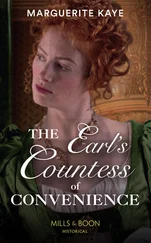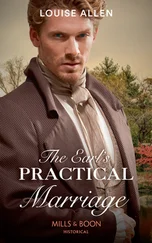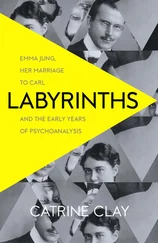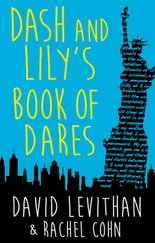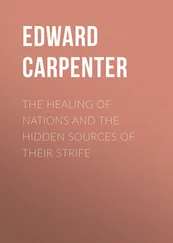It was inevitable that the tragic, early death of such a young man would shock the family. Keith Stewart epitomised all they stood for: brains, honour, courage, strength, and patriotism. It was some while before his body was recovered, but his popularity was so great that both commissioned and non-commissioned officers went looking for it at considerable risk to their lives. His corpse was eventually found lying within a few yards of the German trenches. It was brought back and buried by the British chaplain in the cemetery of Vieille Chapelle. In the months that followed the news his father received many tributes. Tommy Graham, who fought with him, sent back to Britain wounded, wrote to him:
He was young as far as his years are concerned, but he was old in wisdom … He never asked one of us to do something which he would not do himself: he shared our hardships and our joys; he was, in fact, one of ourselves as far as comradeship and brotherly love was concerned … We never knew who he was till we saw his death in the Press; but this we did know, that he was Lieut. Stewart, a soldier and a gentleman every inch … it’s not every day one like Stewart joins the army. There was not a man in his platoon, or the regiment for that part, but would have willingly went through hell for him, and mind you we faced hell out there on more than one occasion.’
Graham had heard of the death from another officer, Lance-Corporal Alexander ‘Sandy’ Easson, who broke the news thus:
We have lost little Lieut. Stewart … the best man that ever toed the line … None of the rest of them ever mixed themselves with us the same as he done. He was a credit to the regiment and to the father and mother who reared him; and Tommy, the boys that are left of the platoon hope that you will write to his father and mother and let them know how his men loved him … He died at the head of his platoon like the toff he was, and Tommy, I never was very religious: but I think little Stewart is in heaven. We knew it was a forlorn hope before we were half way – but he never flinched.
The Galloway family motto is Virescit vulnere virtus – valour grows strong from a wound – and so it proved for Lord Galloway, who adhered to it throughout his life. As soon as he had recovered, both from injury and from the loss of his brother, he became honorary attaché to the British legation in Berne in 1918, and then, after the war, in 1919, ADC to the military governor of Cologne. A year later his father died and he succeeded to the title. That he would incorporate his brother’s name into that of his son and heir shows how the legacy of Keith lived on. The military tradition into which the two brothers had been born sets in context the assumptions and expectations Lord Galloway would come to make of his own son, just as, one imagines, they had been made of him. It also explains the enormous sense of disappointment, bewilderment, and shame he would come to feel when he found that his heir could not live up to them. For now, though, Lord Galloway had no reason to suspect that when he married his beautiful young bride, their genes would mix so badly.
Lord Galloway’s marriage to Philippa Wendell in 1924 was seen by society as a second splendid match for the Wendell family, descendants of the victorious American Civil War general, Robert E. Lee. The Wendell sisters were not just beauties – Catherine, the eldest, was blonde and graceful, and Philippa, ‘a vivacious brunette’ – they were American beauties, bringing with them the wealth that the British aristocracy so badly needed. In the fifth volume of The Stewarts: A Historical and General Magazine for the Stewart Society , the tribute to their union reads: ‘To none of all the alliances formed in recent years between fair Americaines and members of the British aristocracy does so much interest attach – historically and genealogically at least – as to that just celebrated by Miss Philippa Wendell and the Earl of Galloway.’ Two years earlier, in 1922, Catherine had married the Earl of Carnarvon. That Philippa had followed her into the aristocracy by marrying a Scottish earl, one whose ancestry placed him at the head of the Stewart clan, was considered another piece of good fortune. ‘She comes on both sides of the house from some of the very oldest New England families,’ the report in The Stewarts gushed, ‘and, it may be added, of pronounced Royalist sympathies.’
The new Lady Galloway was perfect in every way. She was a beauty with fine, noble features. She had pale skin and dark, thick hair (Randolph was to inherit her colouring), cut into a bob and worn pulled back from her face, showing off to good effect the sharp angles of her cheekbones and jawline. She enjoyed listening to and playing classical music, which particularly delighted the musical dowager countess, who in the past had held her own festivals at Cumloden, and she wrote plays and poetry (the latter published in Punch ). Added to this her uncle by marriage, Mr Percival Griffiths, possessed a fine and extensive private collection of Stewart relics. There were wonderfully wrought royal layette baskets, miniatures of Charles I hand-worked in silk; a lock of the ‘Royal Martyr’s hair’; the hawking outfit – pouch, lure, and gloves – of James VI and I; the Bible of Charles II in its bag of Royal Stewart tartan velvet – ‘probably the oldest example of that tartan in existence’ – along with rings, medallions, and trinkets.
Shortly after their marriage Lord and Lady Galloway took a house in London which led the Daily Telegraph to speculate that ‘Lady Galloway would blossom out as a leading London hostess’. She did not. Lord Galloway found that he preferred being on his estate, for which he now felt a great responsibility. Although Lady Galloway had chosen to have her baby in London, soon after Randolph’s birth they travelled back to Scotland.
Cumloden is situated in the county of Kirkcudbrightshire in the south-west, close to the towns of Newton Stewart and Minnigaff. It was not a stately home, but a converted hunting lodge, orginally built in 1821 by Sir William Stewart. The family’s main seat had been the grand and imposing Galloway House, also in the south west, but that had been sold off in 1908 due to the family’s dwindling funds. Cumloden was a low white house with black timbers, not remotely grand or imposing. At the front, there was a porch with a verandah, framed by trees, rhododendrons, laurels, box hedges and azaleas. Inside, to the right of the entrance hall, a couple of steps led off to the billiards room and the main telephone room.
Along the south-west front of the house were Lady Galloway’s sitting room; Lord Galloway’s study; a bedroom called the Orange Room for important family guests; a little store room; and the drawing room, off of which was an ante-room leading to a conservatory always filled with flowers. Double doors led from the drawing room into the dining room, outside which was a hall leading to the bedroom of the head housemaid, and underneath was the wine cellar. A flight of stairs led off to the north wing where Lord and Lady Galloway had adjoining bedrooms (Lady Galloway’s room had a spectacular view). The dowager countess also slept in a pretty room in the north wing, despite it being considered the coldest room in the house. Across the passage was a bathroom and a set of box rooms where Lord and Lady Galloway stored their much-used travel bags. From here another flight of stairs led up to the bedrooms used by the gaggle of old Stewart aunts and American relatives whenever they visited. These rooms also ran along the south-west front of the house and were called South Room (with appropriately facing dressing room), Balcony Room, Blue Room, and Roof Room. The layout continued in this manner – a series of rambling wings connected by a rabbit warren of corridors and narrow staircases. The focal point of it all, close to the entrance hall, was the grand and central spiral staircase.
Читать дальше


